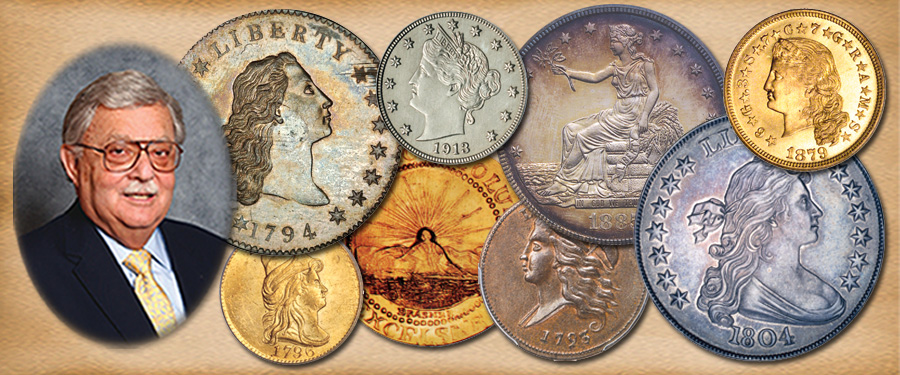
Every hobby has rarities. In this way collecting coins is no different than collecting stamps, artifacts, paintings, trading cards or anything else.
In the early days of the United States politicians, ambassadors and wealthy individuals in America started collecting coins for education and pleasure. People like the famous Adams Family who traveled to Europe extensively on diplomatic ventures brought home with them various coins of other nations and saved them. As shown by the early United States coins sold in 1964 as part of the Lord St. Oswald Collection in London, visitors to America sometimes did the same in reverse.
As wealth grew in the United States, and time was available to some, the search for different coins and dates became more of a hobby. At first the number of collectors of American coins was quite limited, but toward the middle of the 19th century numismatics began to have much broader appeal. This is often traced to the changeover from copper large cents to small size cents that happened in 1857. This new coinage fostered a sense of nostalgia for the “old days” and the old coins and many searched for examples. By this time the designs of United States coins had changed a few times making older coins more interesting and desirable.
As the country grew, new United States mints opened, such as those in Charlotte, Dahlonega, New Orleans, San Francisco and Carson City. The search grew as there were more possible coins to seek for a collection. Interest flourished and the U.S. Mint in Philadelphia struck special coins for collectors that they called "specimen strikings.” At first this was done on a more casual basis, but eventually “Proof” mintages became an important part of the Mint’s business. These could be purchased or “traded for,” and the Mint Cabinet came into existence, causing the Mint itself to become a collector. Coins even found their way into diplomatic circles, as they were used as gifts to officials of foreign governments. These beautiful, superbly struck examples also became symbols of how the United States had advanced technologically.
So early U.S. coins were mainly a method of exchange to replace barter, foreign coins and other means of trade. They became an important part of daily commerce, as they still are today. But for some people, coins became much more and this is where rarity gains importance, as for collectors, coins ceased to be a means to an end, and instead became the end itself.
Because of their use in trade, many coins were made of precious metal such as gold and silver. The production of each coin was limited to how much precious metal arrived at the first Mint and, in some cases, the desires of the person depositing that metal. This situation led to many rarities in early United States coinage. The use of gold and silver coins in international commerce also resulted in some of these coins becoming scarce. Adding to this was the fluctuating balance (or imbalance) of value between gold and silver that could lead to coins being melted for bullion.
Likewise measures used at the Mint to contain costs such as reusing dies and striking over already used planchets created unusual and often rare varieties. Record keeping at the time could be imprecise, and rarities were not necessarily recognized until much later when collectors realized how difficult some issues were to find in daily change. Also, some coins were used and reused, became badly worn, went with the pioneers to distant places or for some other reason were lost and not saved. These factors can affect the rarity of any given date, denomination or mintmark.
Next week I will be back with more of my thoughts on rarity.





